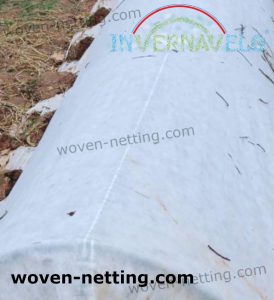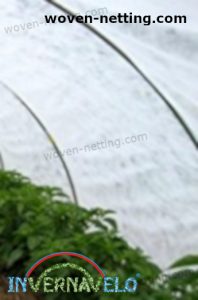Nylon woven netting with rhomboidal patterns is often used as trellis netting for long-bean tutoring and vegetable sweet peas. There are countries like Taiwan where extruded polypropylene white net is also used for annual crops. For home gardens with confined space, you can expand the amount of crop to grow and realize a bigger harvest by implementing vertical gardening into your system.

Vertical gardening involves altering the direction of the growth of plants from the ground to the air. The easiest way of following this technique is to attach garden trellis netting to indeterminate vegetables or the back of growing boxes. A majority of vegetable varieties are capable of vertical natural growth.
Woven netting can be used for traditional plants collected from your local nursery or hardware store. These are mostly bush varieties that are engineered to grow across the ground. In most cases, you will realize that you can actually find the vine varieties of the same plants.
How To Make DIY Trellis Woven Netting for Vegetable Vines?
Making woven netting is a straightforward affair. You don’t need any technical skills to be able to tie strings into a grid of open rectangles and squares. The dimensions of the grids should be determined by the type of plant that will be supported by the trellis net. If the net is for beans or peas, it should be big so that the space can allow for harvesting of beans and peas. Sometimes one of the most important things with vegetable crop vines is to be able to stick your hands through the net to pick plants growing on the other side of the net. Four inches, therefore, will mostly suffice for woven netting for peas or beans. The more the knots in the grid are spaced, the easier and quicker will be the making of the net.

The first step in making your trellis net is to erect a frame that will hold the horizontal strings in place while you are tying the vertical strings. If you can get access to two chairs with tall straight backs, you can place them side by side and use them as your frame. Alternatively, you can use a door frame, which is easier to find for most people.
Requirements for a Trellis Woven Netting
- Cotton string (jute and nylon string can be too slippery and won’t hold the knots tight)
- Masking tape
- A pair of scissors
To determine the length of the horizontal strings, tape the ends of a piece of string to the front side of your door close to the hinge. Next, wrap this to the back side of the door. Finally, add a few inches so that you do not limit the measure and then cut it.
Since you have determined the correct length, you can proceed to cut the rest of the horizontal strings. The number of the horizontal strings you will cut should depend on how big the pattern you have planned for and how wide you want the grid patterns to be. When using a door, you can make a six-foot wide trellis net by banding horizontal strings across from the top to the bottom of the door.

The next phase in making your woven netting is to tape the horizontal strings you have cut around the door. Put a piece of masking tape on one end of a cut piece of string, attach this tape’s string end through the hinge opening at the back side of the door and then firmly press on it. Next, wrap the string around the front part of the door, taking it to the back side and then finally capturing the end of the string under the piece of tape you have earlier placed. Do this one by one to all the strings in accordance to how you had planned for the spacing. You can strengthen the horizontal strings by fixing another piece of tape on every string at the outer corner of the door.
The final phase is tying the vertical strings. You can space these based on the grid size of your choice, and then tightly tie the knots at every intersecting horizontal string. After you are done tying all the strings together into the net, carefully remove the pieces of tape which will make your woven netting fall from the door frame. You can now hang this on a trellis in your garden and support your crop of vegetable vines for at least two growing seasons.
Benefits of Using Woven Netting for Your Vegetables
It’s important for you to realize that plants are generally strong enough to support the weight of their fruits, so the only thing they need from you is to create a stable structure for them. You should, therefore, attach the net to a strong trellis structure, pipe or pole in order to facilitate the vertical growth of the plants. Your woven net can act not only as a support material for your plants, but it can also work as shade netting, although this depends on the size of the grids.

In the early weeks of growth, your plants will require some attention and assistance to be able to attach to the trellis or pole. Once the plant has been able to attach itself, it will be able to comfortably grow upwards without requiring your assistance.
Traditional indeterminate plants that perform well when supported with woven netting include peas, beans, tomatoes, cucumbers, squash, and watermelons. For watermelons and cantaloupe, you need to reinforce the support structure so efficiently to enable the plant to sufficiently handle the weight of its fruits.
